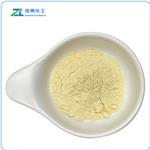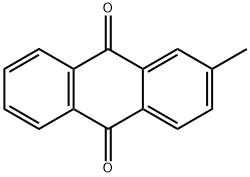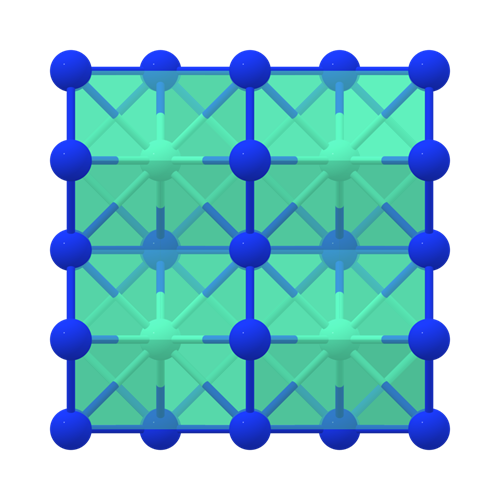Unlocking the Potential of 2-Methyl Anthraquinone: Exploration of Its Chemical Significance and Industrial Applications
Introduction
2-Methyl anthraquinone, a derivative of anthraquinone, is a pivotal compound in the chemical industry, recognized for its versatile applications, particularly in dye manufacture and hydrogen peroxide production.

Figure 1-2 Characteristics of Methyl anthraquinone
Chemical Properties and Structure
2-Methyl anthraquinone, with the molecular formula C₁₅H₁₀O₂, is an organic compound belonging to the anthraquinone family, characterized by its rigid, planar structure. This compound exhibits distinct physical properties, including a high melting point and limited solubility in water, yet it dissolves more readily in organic solvents. The presence of a methyl group attached to the anthraquinone skeleton alters its chemical reactivity and solubility, making it an essential intermediate in various chemical synthesis processes. Understanding its chemical properties is crucial for optimizing its use in industrial applications.
Production Methods
The synthesis of 2-methyl anthraquinone primarily involves the Friedel-Crafts acylation of anthraquinone itself, using acetic anhydride or acetyl chloride as the acylating agent, in the presence of a Lewis acid catalyst such as aluminum chloride. This method allows for the introduction of a methyl group into the anthraquinone structure, specifically at the 2-position, thereby transforming it into 2-methyl anthraquinone. The choice of catalyst and reaction conditions, such as temperature and solvent, plays a crucial role in achieving a high yield and selectivity for the desired product. This production method exemplifies the intricate balance of chemical reactivity and process engineering required to synthesize specialized organic compounds efficiently.
Applications in Industry
2-Methyl anthraquinone finds extensive applications in the chemical industry, primarily due to its role as an intermediate in the synthesis of dyes, pigments, and other anthraquinone derivatives. One of its most significant applications is in the production of hydrogen peroxide, where it catalyzes the anthraquinone process. In this process, 2-methyl anthraquinone is hydrogenated to its corresponding hydroquinone, which then reacts with oxygen to produce hydrogen peroxide and regenerate the original anthraquinone compound. This cyclic process is fundamental in producing hydrogen peroxide on an industrial scale.
Moreover, its application extends to the manufacture of dyes, where its chemical structure allows for the creation of a variety of colors when modified and combined with other compounds. This versatility makes it invaluable in the textile and paper industries, where demand for high-quality dyes is constant. Additionally, research into new applications of 2-methyl anthraquinone in organic electronics, such as in organic light-emitting diodes (OLEDs) and solar cells, highlights its potential in emerging technologies, offering opportunities for innovative applications beyond traditional industries.
Environmental and Health Impacts
The production and use of 2-methyl anthraquinone, like many chemical compounds, pose potential environmental and health risks. Its persistence in the environment can lead to concerns over soil and water contamination, emphasizing the need for careful management of waste and emissions in industrial settings. Moreover, exposure to 2-methyl anthraquinone may pose health risks to humans, necessitating stringent handling and safety protocols in workplaces. Regulatory bodies have established guidelines and safety standards to mitigate these risks, ensuring that its use does not adversely affect human health or the environment. Continued research into its toxicity and biodegradability is crucial for developing safer, more sustainable practices for its production and use.
Future Prospects and Research
The ongoing research into 2-methyl anthraquinone is focused on uncovering new applications and improving its production methods to be more environmentally friendly and cost-effective. Advances in green chemistry and biotechnological approaches promise to reduce the environmental footprint of its synthesis, exploring the use of renewable resources and biocatalysts. Additionally, the potential for 2-methyl anthraquinone in high-tech applications, such as in the development of efficient energy storage and conversion devices, is a subject of considerable interest. By pushing the boundaries of its applications and improving sustainability, 2-methyl anthraquinone remains at the forefront of research, poised to play a pivotal role in the future of materials science and chemical engineering.
Conclusion
2-Methyl anthraquinone stands as a critical compound in the realm of chemistry, bridging traditional applications with future innovations. Its continued study and development promise not only to enhance its industrial utility but also to pioneer sustainable practices, reflecting its enduring significance in science and technology.
References
[1]Soo-Jeong S, Francis Raymond C, Shigetoshi O. New 2-methyl anthraquinone synthesis approach and application in soda-anthraquinone (AQ) pulping[J]. Journal of Korea Technical Association of The Pulp and Paper Industry, 2005, 37(5): 35-40.
[2]Mal D, Ray S. First Synthesis of 9, 10‐Dimethoxy‐2‐methyl‐1, 4‐anthraquinone: A Naturally Occurring Unusual Anthraquinone[J]. 2008.
);You may like
Related articles And Qustion
Lastest Price from 2-Methyl anthraquinone manufacturers

US $0.00/Kg/Drum2024-04-30
- CAS:
- 84-54-8
- Min. Order:
- 1KG
- Purity:
- 99%
- Supply Ability:
- 500mt/year

US $120.00/kg2024-04-25
- CAS:
- 84-54-8
- Min. Order:
- 1kg
- Purity:
- 99%
- Supply Ability:
- 20ton




